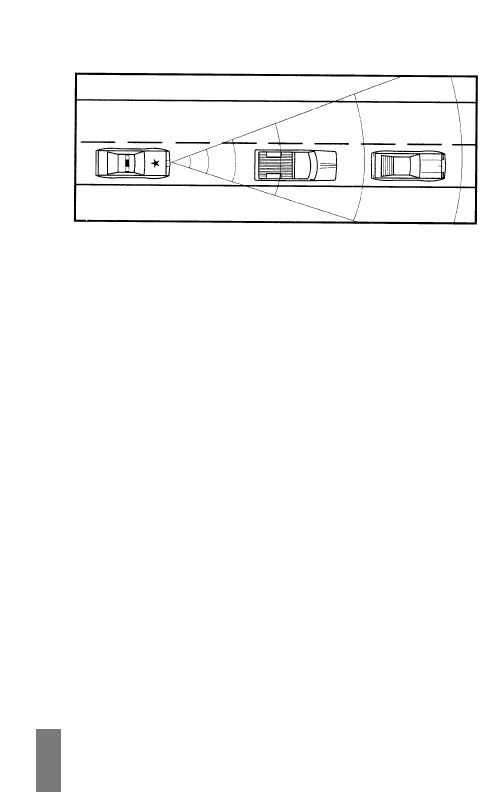
4. Moving Radar behind you, traveling in the same direction.
Police Radar signals transmitted from behind your vehicle
can be received when reflected by objects in front of you such
as large signs, bridges and trucks. As you drive, the size and
configuration of these objects are constantly changing causing
the strength of any reflected Radar signal received to vary.
A strong, uninterrupted alert indicates the patrol car is close
behind.
Instant-On/Pulsed Radar
This type of signal appears suddenly when a Radar unit is
“triggered”. The instant-on alert consists of an intense, three
second audio “burst”, coupled with the type of Radar band
detected and flashing of the signal strength bar graph in the
display.
Typical False Alert (Radar)
Ideally, a Radar detector should only alert in the presence of
police Radar. However, because other devices share X band
with police Radar, false alerts sometimes occur. Generally, a
false signal produces only a short audio and visual alert. Since
they are most often weak, it is possible to drive out of the
signars range very quickly and receive only a brief alert.
Although many times the probable source of the false signal
can be identified (supermarket, bank, commercial building,
etc.), caution is advised until the source can be confirmed.
The X band alert pattern caused by a non-police source can
look like the initial alert produced by actual police Radar. For
this reason appropriate action is required any time an alert is
received.
16


















